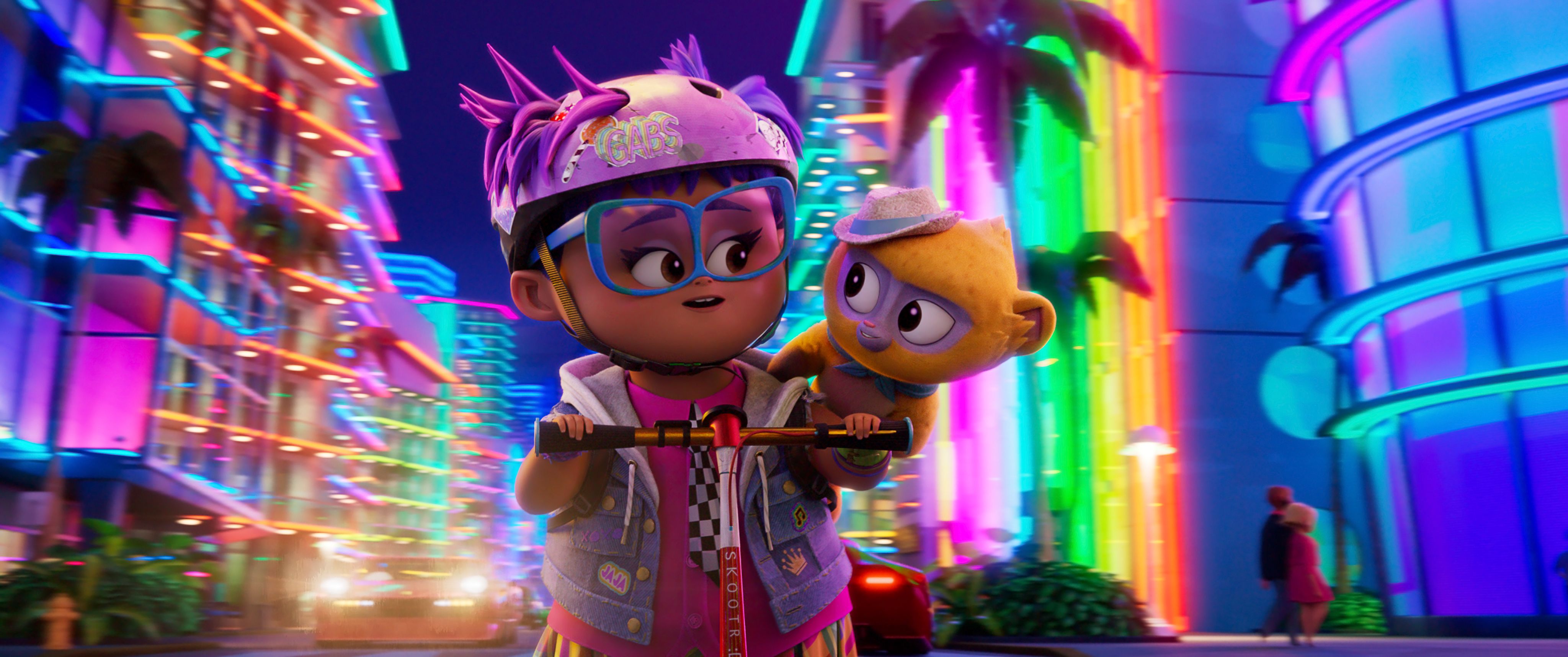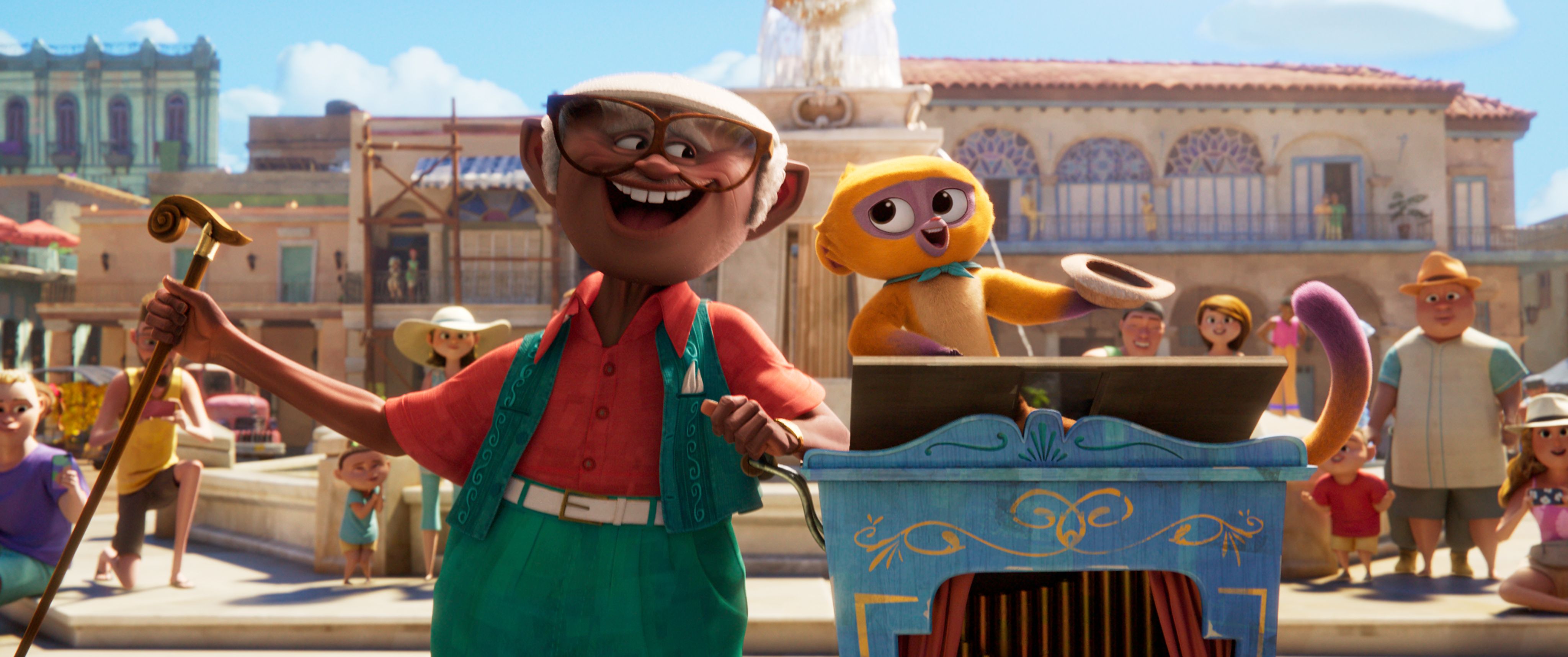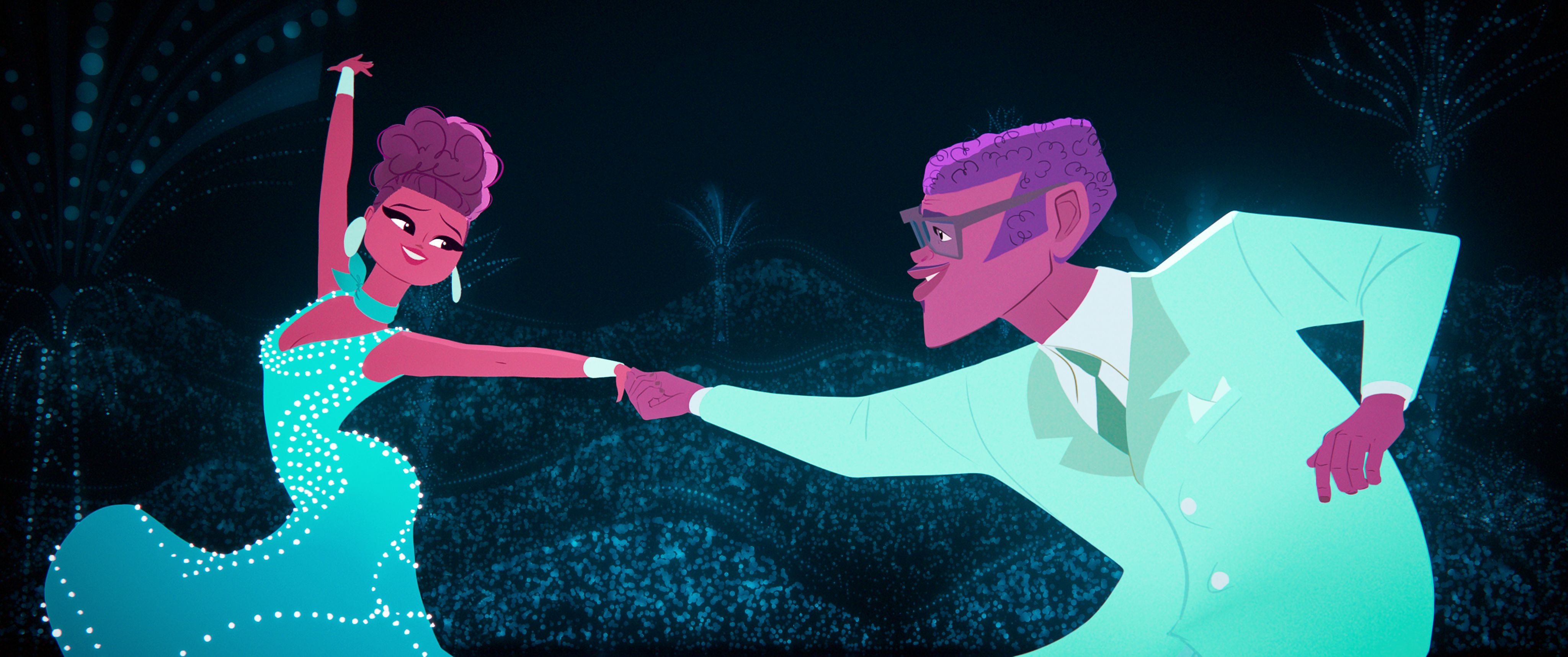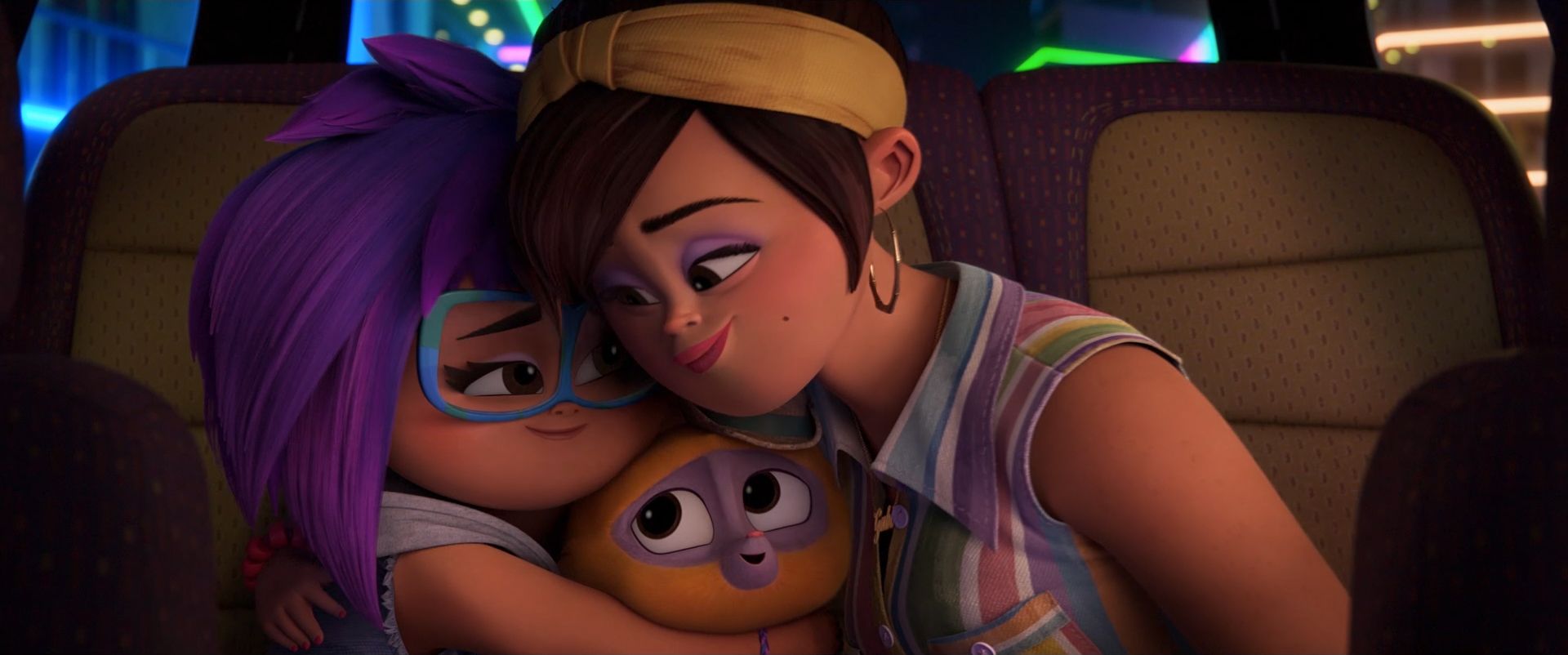Sony Pictures Animation and Netflix debut their latest animated creation, Vivo, on Aug. 6. Starring Tony Award-winning actor and playwright Lin-Manuel Miranda as the titular kinkajou, Vivo follows the adorable, singing creature mourning the loss of his mentor and best friend. A grieving Vivo travels from Cuba to Miami with a young girl named Gabi, searching for answers from his mentor's old flame, Marta. Written by Kirk DeMicco and Miranda's longtime collaborator Quiara Alegria Hudes, and co-directed by DeMicco and Brandon Jeffords, the animated musical explores belonging, grief, and Caribbean culture.
In an exclusive interview with CBR, DeMicco shared the joys of working with Miranda on Netflix's latest animated musical, explained why it was important for each Caribbean setting in the film to feel unique, and broke down the musical's most vibrant numbers.
Vivo is something you've been working on for five years and Lin-Manuel has been working on for twelve years. How did the project come to you at Sony Animation?
Kirk DeMicco: It came to me, when I came to Sony, from Kristine Belson, the President of Sony Animation and my producer on The Croods. When I first came to Sony, I didn't have a project and I was looking around while they were talking about it. They had gotten the project from DreamWorks and I just started talking about it to her and Lin in that way like, "How can I help?" And it just became that.
I was so taken by the original songs he had written, especially, "One of a Kind." That's the one that's still in there that is the heart of the story, the Andres and Vivo story. That core dynamic meant a lot to Lin too. That duo that had played the same act ten times a day for 20 years and lived together. They were like a married couple or a father-son, whatever metaphor you want to put into it, but the idea was what if you lost that person one day? Where would you go and what would you do?
That idea was very compelling to me and there used to be a different song at the very end that Lin had written that I was in love with and was my North Star for four years. When Lin was like, "I think we got it, we don't need the song anymore," I was so sad inside. [laughs] But I think he's right. There's a brand-new song at the very end and it's just this beautiful melody about how he wanted to make his teacher proud and that was the core of that. Everything else, from that point forward, I wanted to be part of this. And grief is something I think about and deal with, so it was something that we could do and only a musical could handle. Without it being a musical, you couldn't make that kind of movie for kids.
You have the unique benefit of having the film's songwriter also being its star so Lin has that personal connection to the songs. How was it incorporating that and the way he carries himself in the booth and on stage in animating Vivo?
Yeah, it's super unique and, like you said, that connection, it's super special -- that idea of doing proud and carrying on. There's that generational thing about someone older than you that's done something for you, this is your way of honoring them, and paying it forward. We wanted Vivo to have all of those strong, beautiful qualities; but, at the same time, it's a comedy. We wanted to put him up a tree and throw rocks at him. The fun and unexpected excitement of that -- after coming up with Gabi with Quiara and having her come into the mix -- was seeing [Vivo] grow endlessly frustrated with this unsinkable girl who just won't take "no" for an answer. And he's suave and sophisticated, professionally trained, and well into his life when in walks this tornado.
For example, that scene on the barge when he throws his biggest frustration fit and all those sounds he's making, that was something that was great because it showed us that not only does Lin watch cartoons but he also has kids and this is going to be fun and the seven-year-old in us is going to be laughing at this. The fact that you can have someone with that stature in the artistic community be willing to [do], "This one is for that seven-year-old" because Vivo is going to be flopping around and making fart noises.
One thing I also find striking about the animation is the use of light and color, there's a vibrancy there. How was it being sure to add that to the film?
It was massive. Carlos Zaragoza, our production designer, from the very beginning thought that we should take this on a theatrical presentation, even the curtains opening were his idea, like you were watching a play. I had always thought it would be fun to have this be like a big 1950s stage musical where everything is designed, tunnels of light are designed, and play with it! The thing about Lin's music in this film is that it crosses so many musical identities, it's not just one tone or idea. Yes, we start with mambo but then we go into R&B and hip-hop, and come back into a ballad, it crossed all these divides that we were thinking we wanted to play with the visuals within the songs.
But also the journey itself, coming from Havana to Key West then through the Everglades to Miami, was that we had these four visual resets. Roger Deakins, our visual consultant who was on from the very beginning when we started showing him things, was helping us in many ways but one of the big ways was marrying the visual styles -- the lighting with color, those flights of fancy moments with our real world. The real world had to be caricatured enough where it didn't feel like things were just dropped on top, I think that's what it is. Those for me when they happen, stop movies dead in their tracks -- especially musicals -- because I start to think that some other studio did that song, that they shipped it off. The idea of trying to make it all work together visually but crossing very different styles was [important].
With Vivo being a road movie going from Cuba to Florida and Caribbean culture not being homogenous, how did you want to differentiate those settings while maintaining the overall tone while you were working with Quiara?
There's two things that happened there, with Quiara, but also Alex Lacamoire, our composer. Alex is Cuban-American and was born in Miami. There's things in there, even with our opening songs, there's reggaeton and so much of a mix where they live musically. Throughout the writing process, when we were bringing Gabi in there, it was a big opportunity to bring a girl that was the American representation of what that meant for Quiara. Vivo even says it, he goes, "We're Plaza guys, we're not Miami guys, we've never even left the Plaza! We only know two blocks!" He's very cloistered and protected, and if he's living in Andres' imagination, he's living in the '60s, living with this man.
Thrusting him with this girl, with Zoe Saldana playing the mom... Zoe brought so much that we could never have scripted into how much the mom is going to react to the daughter while juggling a job, and motherhood. But the real interesting thing was watching Alex work the music into the score and using traditional elements of a score with different instrumentation and arrangements because he's the arranger and the composer so he's in both worlds the whole time. Our songwriting team wasn't in a different room than our composer, they were together.
I feel like that did a whole lot because we were going into one thing, with all of Lin's signature stuff, then more of a Broadway song where you're building up to the curtain drop. Where we always were going to end up was, "Inside Your Heart," with Gloria Estefan singing that song that was going to get you. We were always going back to that place. That was our home base -- the idea of Vivo and Gabi performing a whole new song came later -- but that home was the idea musically.
With this production taking five years, what were some of the things that surprised you the most along the way as you prepare to finally send it out into the world?
One thing, as I've been talking to people, that is super exciting is that we were making a musical about musicians and to have a guy like Juan de Marcos -- who has never acted a day before in his life -- who's such a great actor and brought so much to it, the warmth. And Ynairaly, showing her to the world, a young girl from New York who is not as young now -- she's in a performing arts high school ready to take on the world. There's so much authenticity in her being in this. You can't write what Gabi does. That is [Ynairaly]. That's the stuff that acting teachers would've gotten rid of and thank gosh we got it on film! There are so many little things that she does... There's this little moment where she sits down, puts the thing in the microwave, and goes [makes funny noises], it's this weird little thing she did as a kid because she was a kid when she did this. It's genius, those little things when you capture them.
And to be sitting there working with Juan, Lin, and Gloria... When we recorded with Gloria in Miami, it was the last trip I did on a plane before the pandemic. We went out in January 2020. We got down to Miami and recorded both her songs and did a bunch of her lines and she was a dream. I don't know how we would've thought to have made the movie without her. But her connection to the movie, and to Marta... She was singing this song with Alex and Lin and I just felt like I'm surprised when things I dream about actually work. I'm happily surprised.
Co-directed by Kirk DeMicco and Brandon Jeffords, and co-written by DeMicco and Quiara Alegria Hudes, Vivo premieres Aug. 6 on Netflix.




